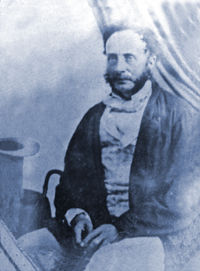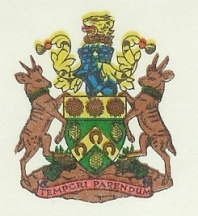As native Pinetonian (i.e. resident of Pinetown, KwaZulu-Natal) I ultimately owe my res-appointed nickname (Piney) to a gentleman named Sir Benjamin Chilley Campbell Pine.
Pine, an Oxbridge man, was a well-travelled representative of Her Majesty’s Colonial Service during the 19th century. According to Trinity College’s alumni database, following his studies he was called to the Bar in 1841, after which he was variously:
- Queen’s Advocate in Sierra Leone, 1841
- Governor of Natal, 1849-56 (which was then one of two British colonies in present-day South Africa)
- Governor of the Gold Coast, 1856-9 (which is present-day Ghana)
- Lieutenant-Governor of St. Christopher Island, in the West Indies, 1859-1869 (better known as St. Kitts)
- Governor of Western Australia, 1868 (though he never pitched up for the gig, deciding instead to stay in the Caribbean when a position became available in the Leeward Islands … )
- Governor-in-Chief of the Leeward Islands, 1869-73 (he was knighted in 1871)
- and finally, again Governor of Natal, 1873-5
As a Governor of the Natal Colony, Pine’s influence and legacy remains (albeit nominally) in the names of schools (Benjamin Pine Primary, Pinetown Boy’s and Girls High, respectively) and the city’s coat of arms (which to my recollection I have never seen displayed in public). However, I have always found it somewhat perplexing that the heraldic representation of Sir Benjamin Pine is, quite universally and consistently, a pineapple. Given that the word “pine” in the English language can refer both the tropical fruit and the coniferous tree, one would have thought the latter may have been a more dignified and decorous choice of symbol to blazon on official signage. Whereas trees are usually associated with strength, fortitude and stoic perseverance, pineapples are … well, symbolically inert. Nevertheless, Sir Ben opted for pineapples.
Alas, it is not only Pinetown’s (relatively obscure) coat of arms which bear the figurative fruits of his colonial labour. The first (equally obscure) badge and flag of the Leeward Islands was also designed under the auspices of Pine when her served as governor, who opted for a very personalised and somewhat bizarre design:
The Badge of the British Leeward Islands (left) which was also used on the Blue Ensign as the Islands’ flag (right) features a rather poorly rendered vista of a Caribbean bay, complete with two entirely disproportioned schooners, a colossal pineapple occupying pride of place, flanked by three smaller pondering pineapples in the background. The naiveté of the design is explained by virtue of it of being Pine’s own conception (and most likely of his own execution too). In constructing the ultimate heraldic pun, Pine cast himself as the large specimen in the foreground, while the smaller pineapples representing his wife and two children. What a strange fellow he must have been.
Given this trace of whimsy, Pine’s choice of a pineapple rather than a pine tree began to make sense to me. In a time when places such as the Caribbean islands and the Empire’s far-off colonies represented (quite literally) the frontiers of civilisation, the allure of adventure promised by the Colonial Service must have been an enticing prospect to many administratively inclined Britons. Whilst his peers in 19th century Dickensian London were shivering through a miserable British winter, Pine was no doubt wading in the warm tropical waters of the Indian ocean with his jodhpurs rolled up to his knees, sipping smuggled rum from a hollowed-out coconut; or hunting wildebeest amidst the emerald peaks and valleys of Natal. I can only imagine the envy with which news of his exploits was received by his desk-bound colleagues in the Colonial Office back home. Any of those dreary chaps would no-doubt have been satisfied with a tree as their heraldic trademark – dignified … and boring. But not the maverick Benjamin Chilley Campbell Pine. He chose a symbol that represented everything that was exciting about Victorian Britain and its overseas exploits!
Noting no small amount of irony, I feel that it is somewhat poetic that the frivolity of Pine’s pineapples have managed to outlive the overwhelming power and expanse of the British Empire that he served.




Pingback: The British Ensign: Variations on a Theme | anapophist
Interesting reflections on Ben Pine’s use of the Pineapple. Pine may have been aware of an association between his family and that of the Devon Pyne family. The latter’s arms incorporate three Pine cones. In heraldic terms pine cones are sometimes referred to as ‘Pine Apples’ and in later years this description is mistakenly depicted as the tropical fruit – an error that Ben may have applied in his use of Pineapples described above.